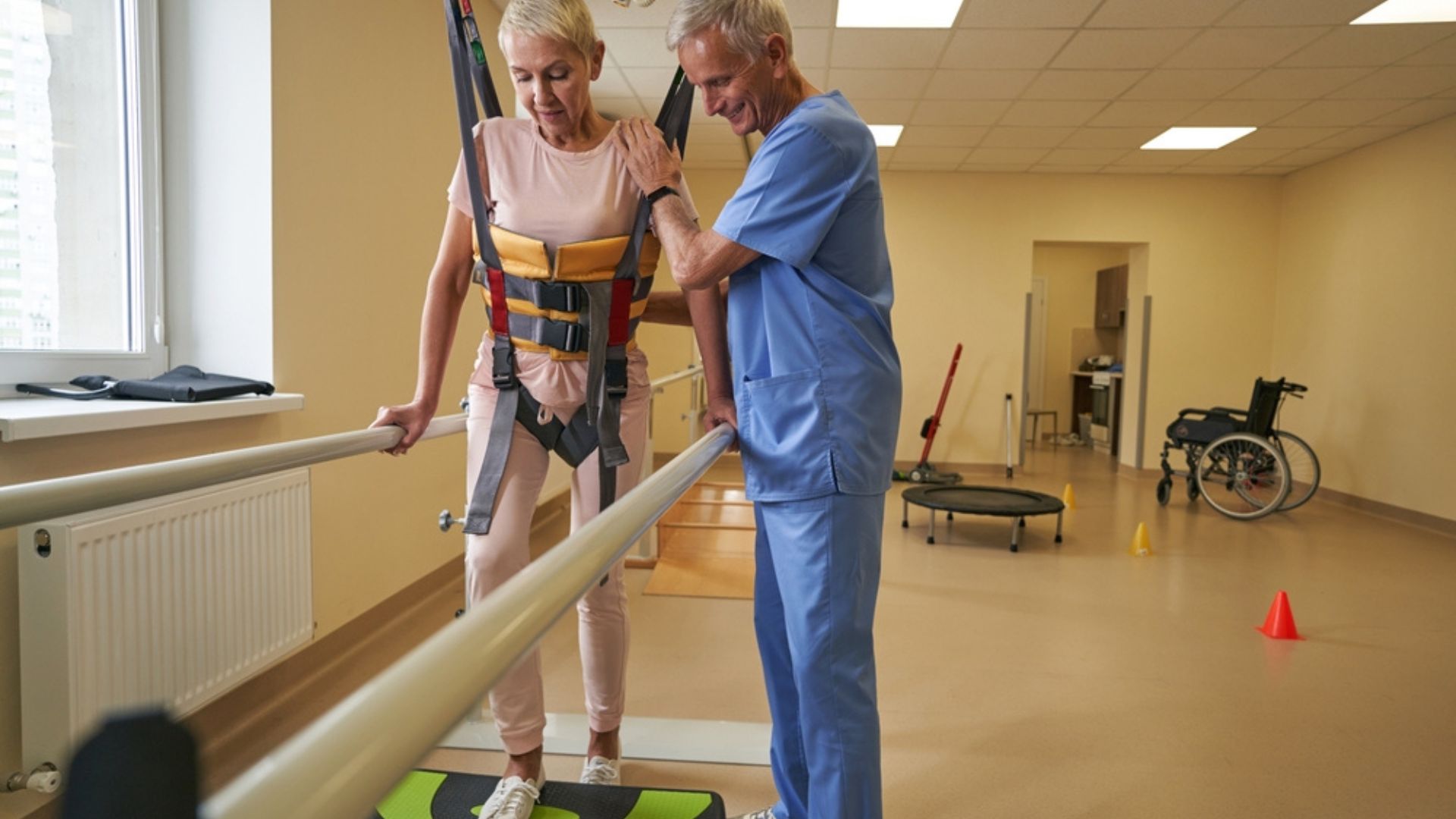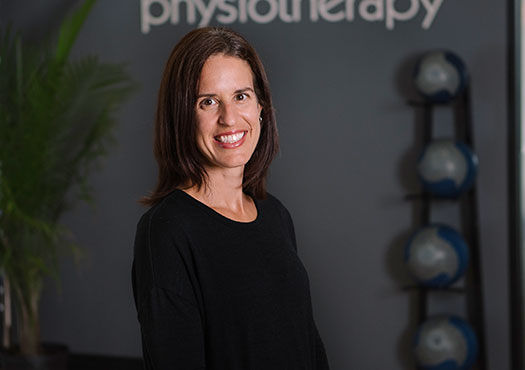Navigating the path to recovery after a stroke is a journey marked by determination, hope, and the relentless pursuit of regaining one’s independence. Among the myriad of rehabilitation strategies available, balance training stands out as a cornerstone in this quest. It’s not just about physical stability; it’s about reclaiming your life, step by step.
A stroke can disrupt the intricate communication network between the brain and body, leading to a loss of balance and coordination. For many, this results in a fear of falling, which can significantly impact their confidence and willingness to engage in daily activities. This fear, though understandable, can become a barrier to recovery. Here’s where balance training plays a transformative role.
In this article we will look at the evidence around balance training, the benefits of an individualized approach to training and key components of balance training for stroke recovery.
Table of Contents:
- Evidence behind balance training
- Individualized approach to balance training for stroke recovery
- Key components of effective balance training for stroke recovery
- Conclusion
Evidence Behind Balance Training
Balance training isn’t merely a series of exercises; it’s a holistic approach that retrains the brain and body to work in harmony.
After a stroke, the brain undergoes a remarkable process known as neuroplasticity, where it forms new connections and pathways. Engaging in targeted balance exercises encourages this neural rewiring, helping to restore lost functions and improve overall stability.
A systematic review found that balance exercises improved balance performance in the moderately severe stroke population.[i] In 2024 a scoping review found that personalized balance training can improve balance and confidence of stroke patients and reduce the incidence and fear of falls.[ii]
You may also enjoy reading: Massage Therapy for Stroke
Individualized Approach to Balance Training for Stroke Recovery
A comprehensive balance assessment should be done prior to balance training to ensure balance interventions are tailored to the individual and to ensure training is effective.
In stroke therapy a targeted assessment looking at balance will include:
- Postural Assessment – Looking at key postural muscles and how they are active or inactive at rest and with movements. Deviations in normal alignment will have an effect on balance reactions.
- Muscle Strength Testing – Assessing the strength of key muscles involved in balance reactions.
- Sensory Testing – Looking at sensation including joints sense and sensory integration is key in providing a feedback system to the muscles to help in balance and stability.
- Range of Motion Testing – Limitations in joints range of motion due to joint or muscles stiffness can impact balance.
- Spasticity Assessment – Neurological tone or tightness, particularly in the adductors, hamstring and gastrocnemius muscles can impact ability to weight bear or move the affected leg during standing and moving.
Measures can help to reassess level of recovery and progress. Balance outcome measures for stroke can include:
- Berg Balance Scale
- Timed Up and Go
- Balance Evaluation Systems Test
- Community Balance and Mobility Score
- Dynamic Gait Index
No two stroke recovery journeys are the same, which is why a personalized approach to balance training is vital. Working with a physical therapist or a specialized stroke rehabilitation professional can ensure that the exercises are tailored to your specific needs and abilities. This personalized touch not only maximizes effectiveness but also keeps the training safe and aligned with your recovery goals.
Beyond the physical benefits, balance training has a profound impact on emotional well-being. Regaining the ability to move confidently and independently can lift spirits, reduce anxiety, and foster a sense of achievement. This increased confidence can help to promote independence in all areas of mobility.
You may also enjoy reading: Stroke Rehabilitation at Home
Key Components of Effective Balance Training for Stroke Recovery
Key components of effective balance training for stroke recovery can include
Static Stability Exercises: Focusing on maintaining balance while stationary, these exercises might include standing on one leg or using a balance board. They are crucial for strengthening the muscles that support stability and improving postural control.
Dynamic Stability Exercises: These exercises challenge the body’s ability to maintain stability while in motion. Activities such as walking on uneven surfaces, navigating obstacle courses, or performing controlled movements can enhance proprioception—the body’s awareness of its position in space.
Functional Training: Integrating balance exercises into daily activities makes the training more relevant and practical. Practicing standing up from a chair, reaching for objects, or climbing stairs can help rebuild confidence and functionality.
Strength and Flexibility: Building strength, particularly in the core and lower body, is essential for balance. Flexibility exercises ensure that the muscles and joints move freely, reducing the risk of injury and enhancing overall movement quality.
Perturbation Based Balance Training: This is a form of reactive balance training to improve balance control after unexpected outside forces cause a loss of balance. The type of training produces quicker muscle responses to unpredictable perturbations to improve balance reactions and decrease the risk of falling.[iii] This type of training if often done in a harness system limiting any risk of client injury and facilitating confidence in client’s abilities.
You may also enjoy reading: Hydrotherapy for Stroke Recovery
Conclusion
Balance training is more than just a physical exercise regime; it’s a lifeline that offers hope and a pathway to reclaiming independence. By focusing on dynamic and static stability, integrating functional movements, and tailoring the program to individual needs, balance training empowers stroke survivors to rebuild their lives with confidence and dignity.
At Propel Physiotherapy our physiotherapists are experienced in balance deficits and treatment in the stroke population. Our LiteGait rehabilitation harness system also ensures safe and effective balance training while helping clients improve their mobility.
Having an experienced and knowledgeable therapist can help assess, guide, educate and plan in your recovery process. Contact us to learn more about how our therapists can help you become more independent after a stroke and achieve the goals that are important to you.
You may also enjoy reading: PoNS Therapy for Stroke Walking Impairments
References
[i] Lubetzky-Vilnai A, Kartin D. The effect of balance training on balance performance in individuals poststroke: a systematic review. J Neurol Phys Ther. 2010 Sep;34(3):127-37. doi: 10.1097/NPT.0b013e3181ef764d. PMID: 20716987.
[ii] Chen Kehan, Zhu Siyi, Tang Yidan, Lan Fuxia, Liu Zuoyan, Advances in balance training to prevent falls in stroke patients: a scoping review, Frontiers in Neurology, Volume 15, 2024, DOI=10.3389/fneur.2024.1167954
Written by

















